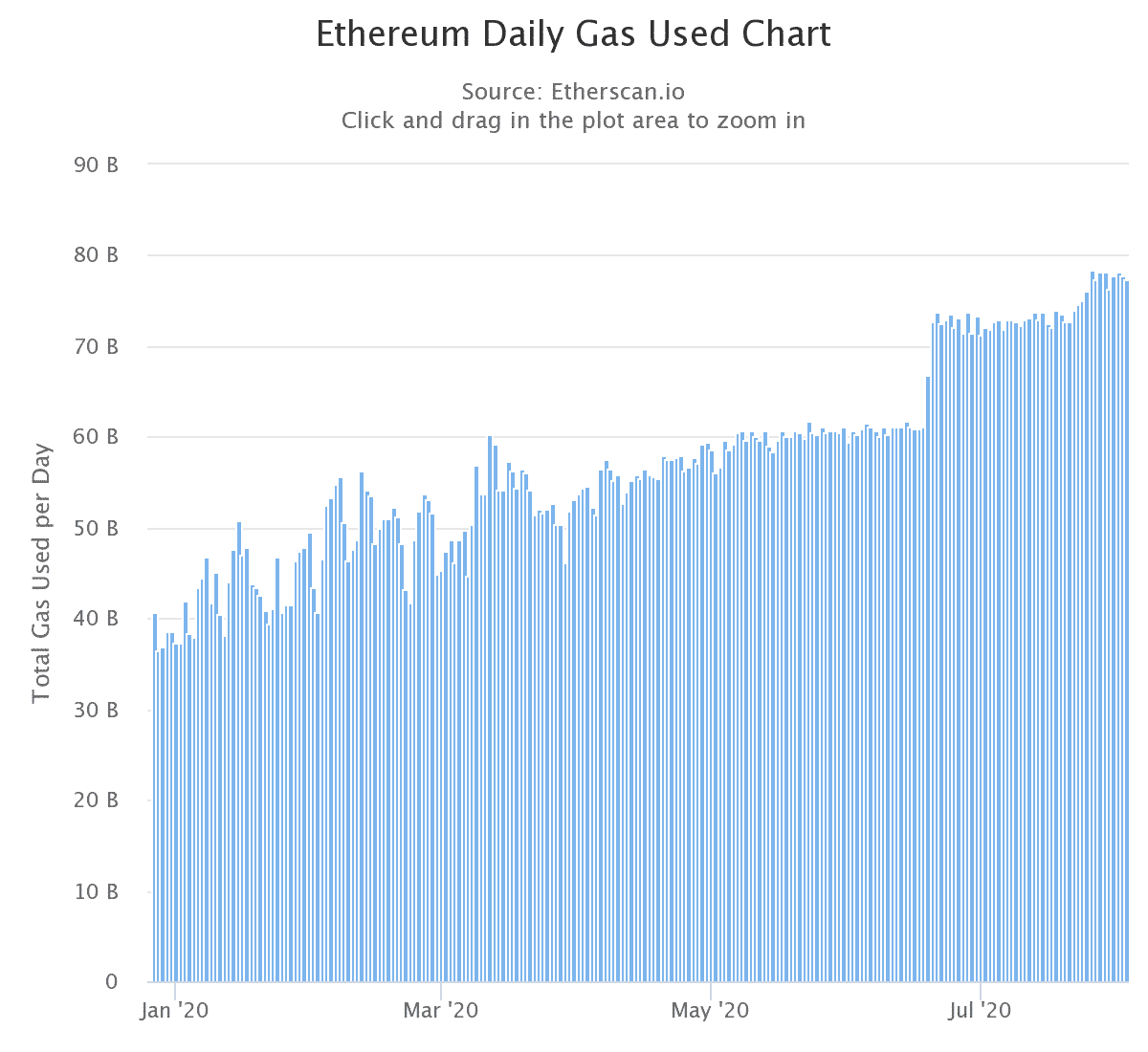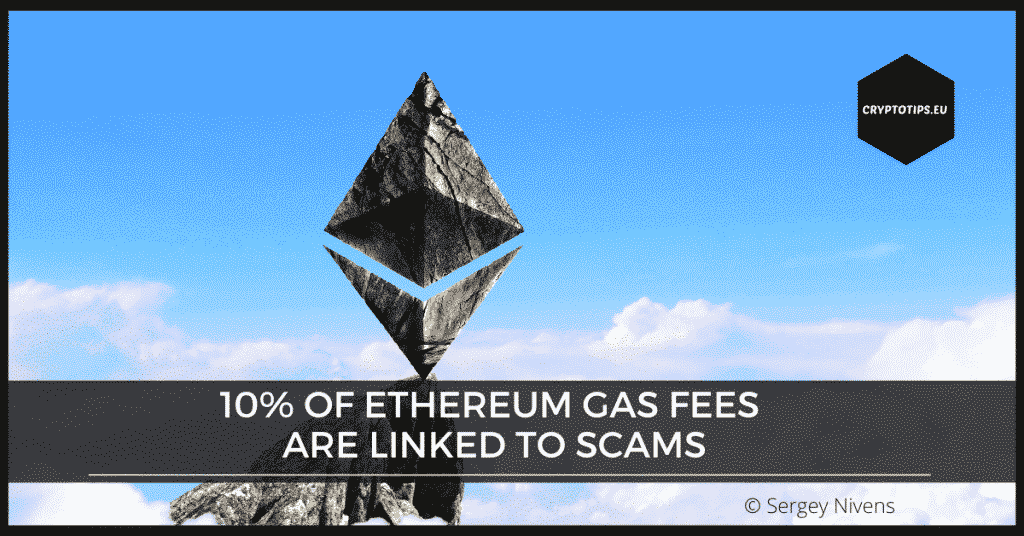10% of Ethereum Gas fees are linked to scams
Last Updated on 4 August 2020 by CryptoTips.eu
Ethereum network congestion problems are now so ingrained in the cryptocurrency landscape that (almost) no one is paying attention to it. However, the network would be better off if it was not used by malicious actors. 10% of the gas used on the Ethereum network is thus linked to Ponzi scheme scams.
Gas, a precious fuel for Ethereum
Gas is a virtual unit that represents the IT costs of an operation on the Ethereum network. The quantity used, therefore, gives a good indication of the health of the blockchain, and it also shows when it reaches its capacity. As can be seen from the data collected by Etherscan, the use of Gas has increased significantly since the start of 2020, thanks in particular to the explosion of the DeFi sector.

If this confirms the problem of scalability of the Ethereum network, this increasing use shows however that it is used more and more. But it would be misleading to view this development only as a sign of the progression of DeFi and other legitimate activities.
Scams which represent a significant part of the Gas used
As Crypto Briefing pointed out, the congestion of the Ethereum network is indeed partly due to Ponzi scheme-type scams. In particular, projects like Forsage, Lion’s Share, or the Ponzi MMM scam. In July, these dubious smart contracts represented 5,600 ETH in gas costs.
That is to say 10% of the total use of Gas on the network. In the end, these scams use the same resources as Tether (USDT), the stablecoin which has also experienced remarkable growth in recent months.
The problem is that the presence of these Ponzi schemes would already be noticeable on a more scalable network. But on Ethereum, which is already struggling to optimize its resources, this becomes downright problematic. A blockchain that has struggled for several years to be efficient enough on a large scale cannot afford this type of use.
And this creates another concern: Gas costs are increased due to the congestion created. This means that Ethereum users will pay more for their transactions directly because of these scams. Another problematic aspect of this trend is that it distorts network performance.
Although the Ethereum price has shown an impressive form in recent months, it is indeed necessary to cut a good number of transactions to have figures which only take into account its “legitimate” uses. Failing to eliminate scams, we must, therefore, hope that the switch to Ethereum 2.0 will make it easier for legitimate smart contracts to take up more space.
